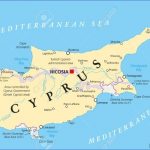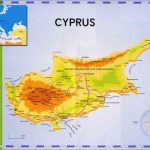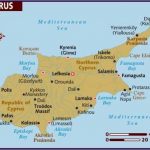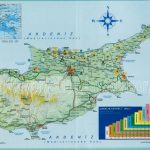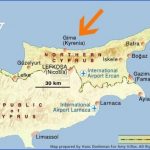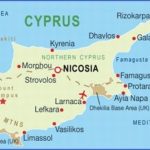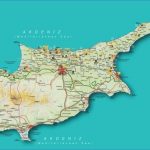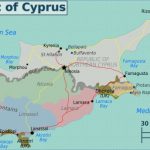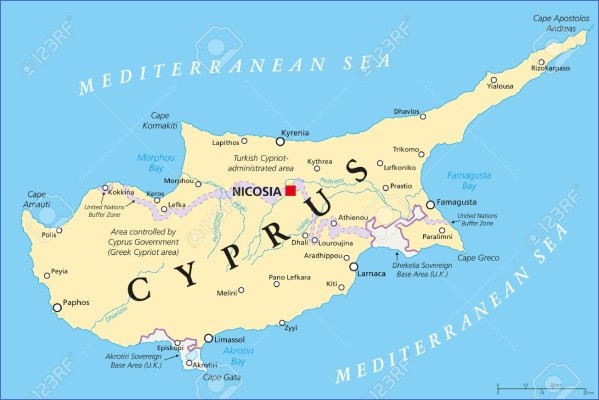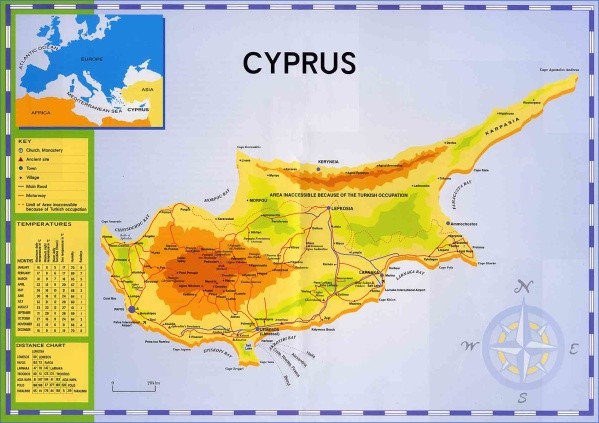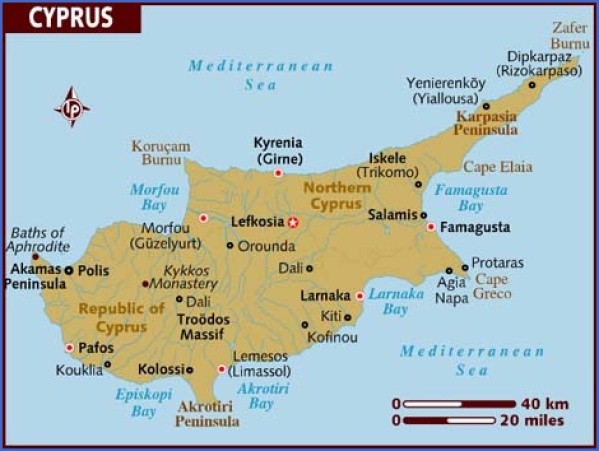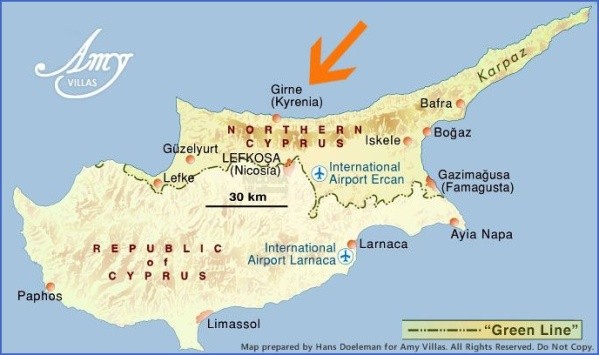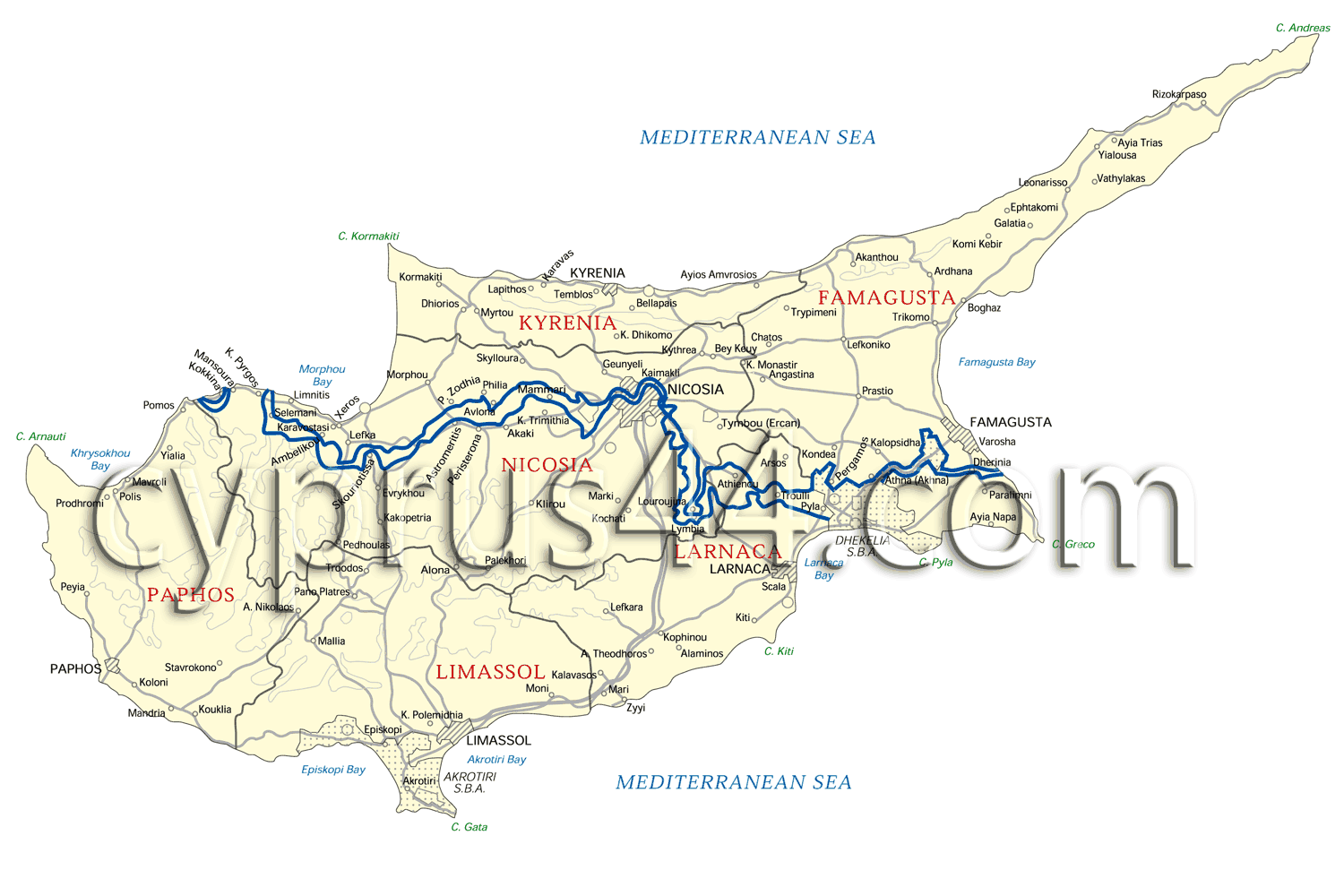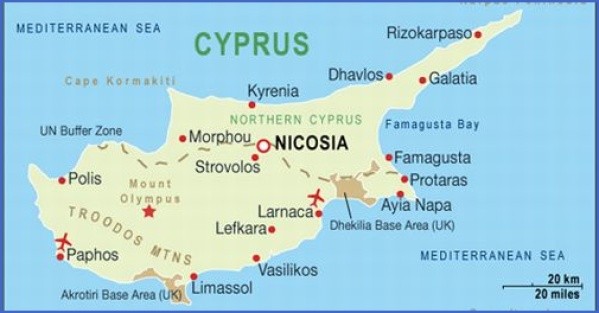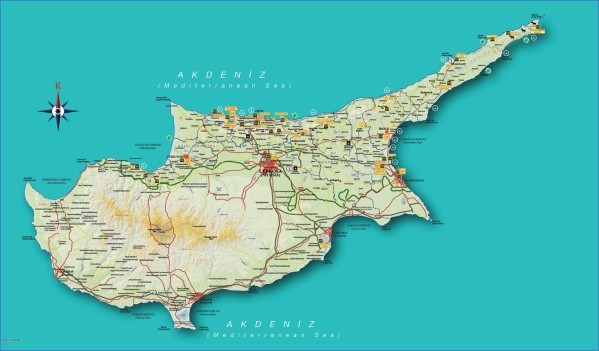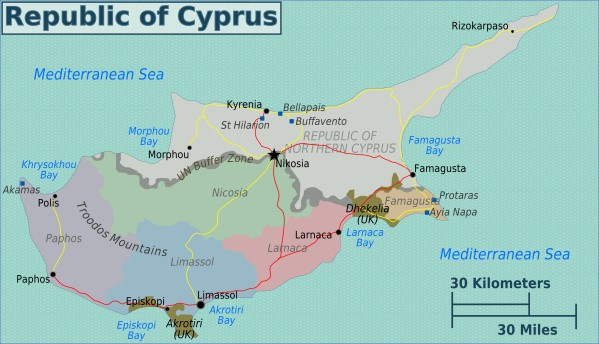Five-domed church of Agia Paraskevi, Geroskipou
Geroskipou. According to tradition, implied even by the name of the village, here, or slightly west of the settlement, were the holy gardens of the Goddess Aphrodite. Pilgrims from Nea Pafos passed through Geroskipou before reaching the temple of Aphrodite, at Kouklia (Palaepafos). At Geroskipou, in the holy gardens of the Goddess, donations, sacrifices and many other activities in honour of Aphrodite were taking place. Even currently a cave in the village is called “Bath of Aphrodite”. Strabo, the Greek geographer and historian, mentions Geroskipou, calling the settlement “lerokipis”. It is also mentioned that at Moullia, a coastal locality of Geroskipou, the miraculous icon of Panagia Chrysorrogiatissa was found by the monk Ignatios, who carried it to Rogia mountain from where the monastery took its name. In 1800 Sir Sydney Smith visited Geroskipou and was so much impressed by the resident Zimboulaki, that he appointed him as vice-consul of Britain. Zimboulaki, who was born in Kefalonia, (Greece) settled in Geroskipou and his duties as vice-consul were to protect the interests of Britain. Half of the house of Zimboulaki, where many personalities were hosted, was bought in 1947 by the Department of Antiquities to be converted into Folk Art Museum. The other half was acquired after 1974. It commenced functioning as a Folk Art Museum in 1978. All rooms are full of displays of the Cypriot civilization, particularly of the last two centuries. The Museum hosts costumes, agricultural tools, house utensils, wood carvings and so on. Besides, the village is the center of the famous tasty Geroskipou turkish delights, displayed on stalls on both sides of the road. The industry was established in the previous century. Kato Vrysi, the original fountain of the village, before piped water was introduced to all houses, is an architectural and historical monument. The five-domed Byzantine church of Agia Paraskevi was built somewhere in the middle of present-day Geroskipou. As it is known, there are only two five-domed churches in Cyprus, at Geroskipou and Peristerona (Nicosia). Built in cruciform style, it dates back to the 11th century. The stone-built, low belfry dates back to 1886. According to writer and historian L. Philippou, the west end of the church was extended in the 19th century and enlarged in 1931. A structure erected to the right of the altar and attached to the main church was formerly used as a baptistery. Most probably the edifice of Agia Paraskevi was built on the foundations of an ancient temple, as mentioned by writers G.S. Frankoudis and A. Sakellarios. The visitor should spend some time to examine the frescoes of Byzantine art. The best preserved paintings are: The Nativity of Christ, the Baptism, the Crucifixion, the Resurrection of Lazaros, The Last Supper, Christ Washing, Judas Betraying Christ, Christ before Pilate, etc. There is also a noticeable portable icon, probably of the 15th century, which on one side portrays the All-holy Virgin Mary with the Child and on the other side the Crucifixion with unusual colours. Agia Marinouda, 6km south-east of Pafos and east of Geroskipou, is currently undergoing touristic and agricultural development. Koloni. Within the administrative boundaries of Koloni lie Anatoliko, an annex of Agios Neofytos Monastery, the slaughter-house of Pafos and two potteries functioning on a commercial basis. Acheleia is known for its large estate or its chiftlik of about 640 hectares, lying between Geroskipou and Timi, irrigated by the Ezousa river. The village belonged also to the Grand Commandery. During the Frankish-Venetian period the extensive fertile land of Acheleia was cultivated with sugar-cane, while the production of sugar was destined for Venice and was particularly handled by the commercial firm of Martini, in Venice. Within the administrative area of the chiftlik or close by stand three churches: that of Agios Georgios, built in 1743, close to the main Pafos-Limassol road, the chapel of Agios Theodosios, of cruciform style, stone-built with a number of worn out frescoes on its walls, and the ruined chapel of Agios Leontios near the coast. Agia Varvara. On the right bank of the Ezousa river stands Agia Varvara, an originally mixed village. An open canal, parallel to the river bed, constituting part of the Major Pafos Irrigation Project, has recently been constructed. Timi. A large area of Timi is irrigated by the Asprokremmos dam with a huge water-tower and a canal vividly stamped on its surface. The beach of Timi attracts a number of bathers from Pafos as well as from other tourist areas. Close by is the picnic site of Timi with adequate facilities. The original church of Agia Sofia was covered with mural paintings, before being converted to a mosque by the Turks in 1571. Pafos International Airport. It has been constructed on land belonging to Timi and Acheleia settlements. The functioning of the airport began in 1983 and serves two main purposes: tourism and export of vegetables. Mandria. The visitor enters the settlement under the arches of cypress-trees which, together with other cypress and tamerisk-trees, have been planted as wind-breaks. Close to the coast lies the modern chapel of Agios Evresis, while the old chapel cannot be traced. Close to the chapel, a rounded hillock and many caves most probably betray the old settlement of Arsinoe. Close by is also the Zefyros point. Achni. The cove between Chapotami and Diarizos, south-east of Kouklia, mentioned, though not named, by Strabo, is called Achni. Most probably pilgrims arriving at Achni joined those from Nea Pafos and together followed the same path towards the temple of Aphrodite during the festival of “Afrodisia”. Petra tou Romiou (Rock of Romios), at the extreme southeastern part of Pafos, close to the district boundaries of Pafos-Limassol, is probably the number one place of interest in Pafos. The rock is loaded with myth, tradition and memories. The fruitful Greek imagination, wise and infallible in its creative conceptions, chose out of all Greek islands Cyprus, as the birth place of the Goddess of Love and Beauty. It is surprising that geologically there is no relation of the rock with the adjacent rock formations. This partly explains the tradition that the Rock was thrown there by the Byzantine hero Digenis Akritas. Most probably in the past the slope around was covered with thicker and taller natural vegetation. It is Eratosthenis who passed the information to us that the whole of Cyprus was covered with forests. It is from this white foam of the waves that Aphrodite (Venus) was born. She emerged from the foam, and the gold-dressed Horae received her with joy. They placed on her head a beautiful gold crown. Finally she came to rest at Kouklia (Palaepafos) where her temple, currently ruined, is found. The rock is visited every day-summer and winter-by tourists. They come here to look at and admire the coastline where the Goddess Aphrodite was born. A restaurant close by on the slope, serves visitors. The view from the restaurant is extensive and majestic. Though the waters of the sea near the Rock are deep, nevertheless, sunbathing or swimming in the exact locality Aphrodite was born, is always a challenge and an unforgettable experience.
Cyprus Map English Photo Gallery
Petra tou Romiou
Route: Kouklia (including its archaeological and cultural monuments)
Kouklia clay bath-tub from the Sanctuary of Aphrodite (1400-1050 B.C.)
Kouklia (Palaepafos) is the settlement that impresses with its large number of monuments. The modern settlement itself stands on the ruins of Old Pafos (Palaepafos) with its temple of Aphrodite. Here lies the famous grand temple of the Goddess of Love and Beauty, which served people for hundreds of years until the advent of Christianity. Close to the temple of Aphrodite lies the manor house of Frankish period, known as chateau of Covocle. The visitors can focus their attention on the following: (i) The Temple of Palaepafos. The area around present-day Kouklia, as witnessed by findings unearthed, was inhabited continuously since the 15th century B.C. Though Kouklia is an interesting village, it is nevertheless, the worship of Aphrodite, the dynasty of Kinyrades, and the “Afrodisia” ceremonies which impress and attract visitors to the village. The ruins in their present condition stretch south of the settlement up to the chateau of the Lusignans. The huge hewn blocks of stone, the thick walls, the large courtyards, the capitals and the subsequent mosaics impress, though the original architecture of the temple cannot be surmised. The original arrangements of the temple were, however, quite altered by later Roman changes and additions, when earthquakes necessitated extensive repairs. In fact little remains today of one of the most famous temples of antiquity. A careful study discloses a large open courtyard with two arcades north and south as well as a few rooms at the northeastern section. Most probably the huge blocks of stone, particularly those to the eastern edge of the south arcade, belong to the temple that dates back to the beginning of the 12th century. It is in this section that the large sacred cone was found, which , as believed, was the symbol of goddess Aphrodite. The sacred cone-shaped symbol was always kept veiled and no one was allowed to look at it. It was believed that it was miraculous.
Cyprus Maps – Large Street Maps of Towns and Districts in Cyprus
The Lusignan manor house, Kouklia
The Kinyrad dynasty were the rulers and high priests of the shrine for hundreds of years. Their power was enormous and lasted up to the Ptolemaic era. For the links of Cyprus, particularly of Pafos with the Greek World, Homer mentions the breast-plate of exceptional craftsmanship, donated by Kinyras to Agamemnon, the Chief General of the Trojan War. Who, however, was the founder of the shrine of Palaepafos is not clear. A source from Pausanias mentions Agapinor from Arcadia as the founder who arrived at Pafos after the Trojan War. The worship of the goddess of Love and Beauty was well known to the ancient world. Though there were many ceremonies in honour of Aphrodite the most important was the “Afrodisia”, which attracted people from Cyprus and abroad. The Afrodisia festivities were an annual event and lasted for four days. Pilgrims gathered at Geroskipou and Achni and from there they altogether reached the shrine. From many sources it seems that the festivities consisted of musical, poetic and athletic contests and sacrifices to the goddess, while the priests issued their oracles. The Goddess
Aphrodite was associated with life, love and fertility. She remained throughout centuries the par excellence goddess of the Cypriots.
Maybe You Like Them Too
- Top 10 Islands You Can Buy
- Top 10 Underrated Asian Cities 2023
- Top 10 Reasons Upsizing Will Be a Huge Travel Trend
- Top 10 Scuba Diving Destinations
- World’s 10 Best Places To Visit

